In the last 20 years there have been lots of remakes of classic brands and names from films to cars and even golf clubs. Whilst it can be viewed as almost a dead cert marketing wise, whatever the product, it has to have echoes of the past combined with modern performance in order to be credible.
Having 're-imagined' the Big Bertha, Warbird soles and Great Big Bertha, Callaway now return the Steelhead name to the market with the Steelhead XR irons.
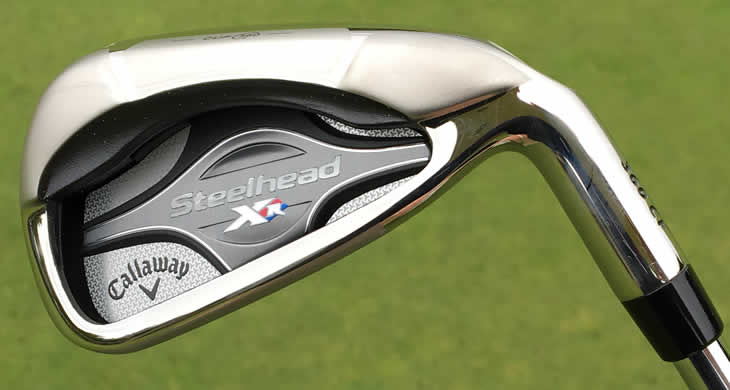
Whilst there were many Steelhead models the X-12 and X-14 stood out for me as the Kings before the X-16 and later models went to Vegas and ate burgers. Thankfully it is the X-14 that the Steelhead XR is based on and looking at the badge on the back or putting it down at address was like going back in time.
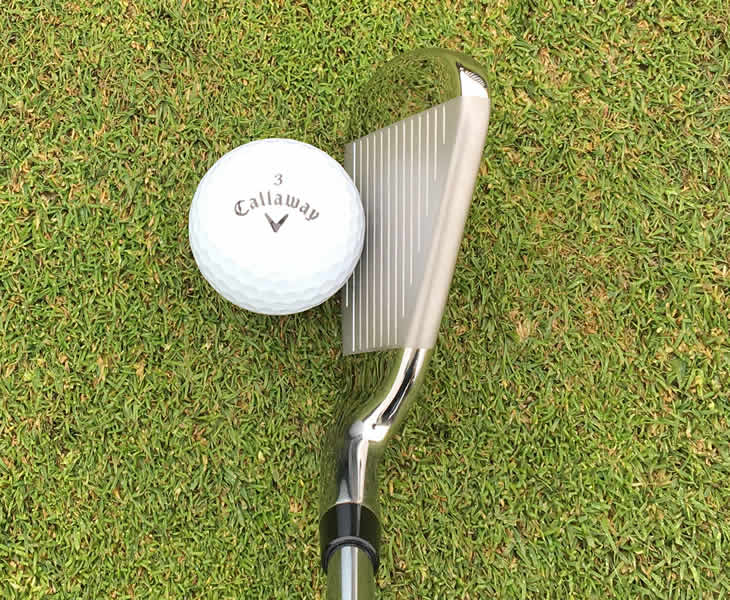
This is the classic Callaway look with a mid-sized top-line, a long head and a relatively small offset to offer some margin for error, but not alienate too many lower handicappers.
The finish is a bit shinier all over than the Callaway XR Irons which subconsciously translates into 'better player' and there is nothing here to dissuade the high single figure player either.
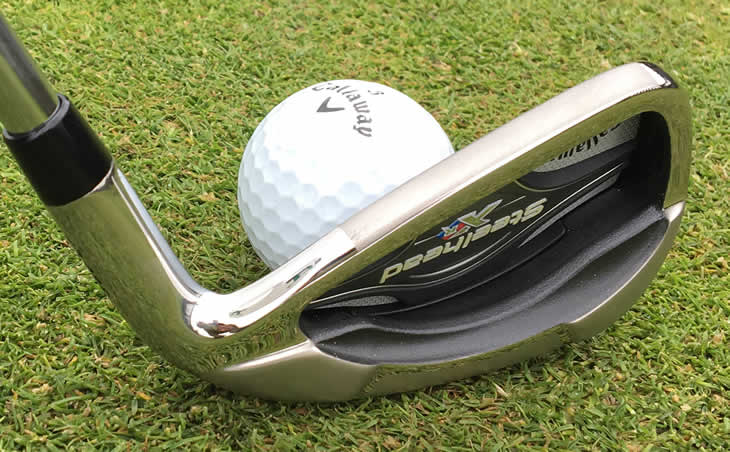
Visually the Steelhead XR face looks a pretty similar shape to the current XR heads, which are made of, urm, steel...
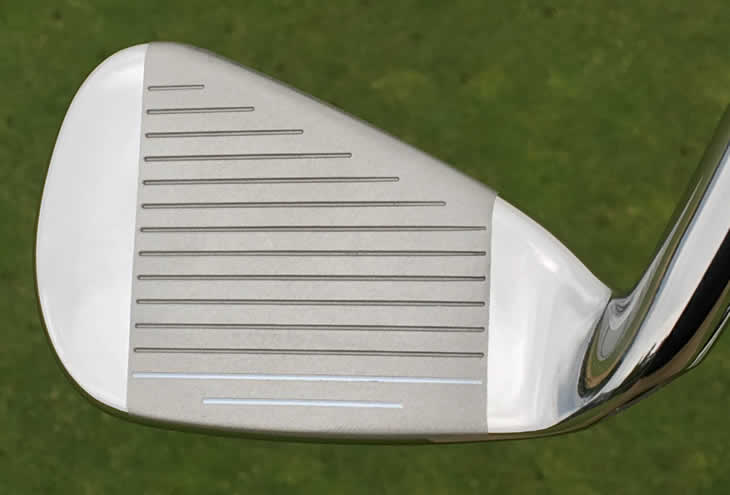
However the hosel sees the return of another Callaway favourite, the S2H2. If you remembered that this stands for Short Straight Hollow Hosel then give yourself a golf geek point.
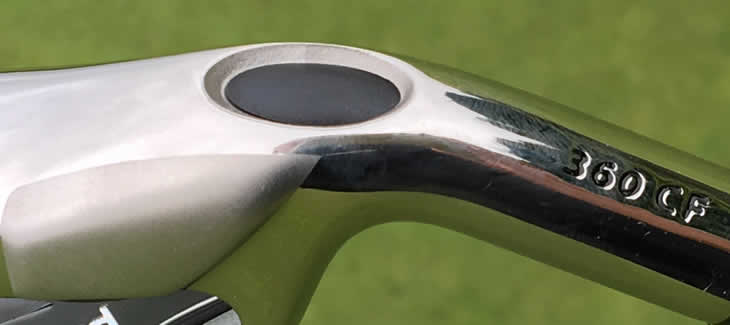
Have another bonus if you know that this shorter hosel saves weight in the hosel area to improve the MOI and moves the CG horizontally to the centre of the face, which is good for feel and performance.
I've always found that any club using this style of hosel usually feels very solid at impact and the Steelhead XR is no different.
However the Steelhead XR is not just a trip down memory lane as the head has been given Callaway's fastest 360 Face Cup that increases the COR by 2.4% on the standard XR to 0.825, just shy of the 0.83 legal limit for woods.

This extra speed comes from allowing the edges of the thin face to flex in a more efficient way it impact to increase the ball speed.

So yes, the Steelhead XR irons do go a long way, but distance is not what irons are really about. You need a collection of about eight or nine of the things to cover a range of around 100 yards in equal gaps.
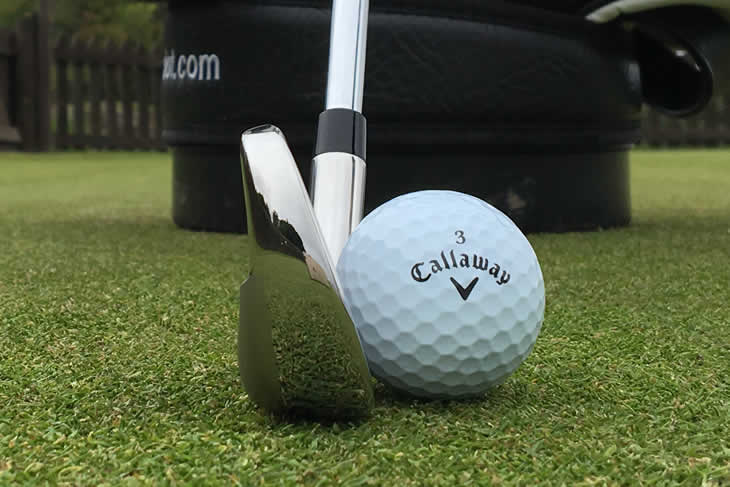
Therefore you can't have a bionic hot spot in the middle and dead spaces across the face. This is where the Steelhead XR stands out as the forgiveness and performance around the face is very consistent to make this one of the most powerful and forgiving irons in the market.
The lower lofted longer irons are really where you feel the power of the new Face Cup as the 6 and especially the 4-iron sound fast, feel fast and look fast in flight.
The longest shot with the 4-iron was going as far as the Steelhead XR 4-hybrid despite having a shorter shaft. However it was not as consistent, as you would expect, hence why the average is lower on the SkyTrak results below.
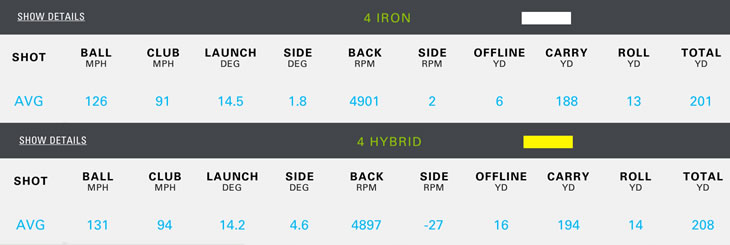
Compared to other game improvement irons in this sector the Steelhead XR had a similar launch, but a higher average level of spin for me, so this will suit mid to slow swing speed players. With a choice of four lofts in the hybrid up to 6H at 28° there are plenty of options available through Callaway custom fitting to get the right set make up.
The shorter irons feel and sound solid and as you move up the set the cavity in the back gets bigger and so does the sound.
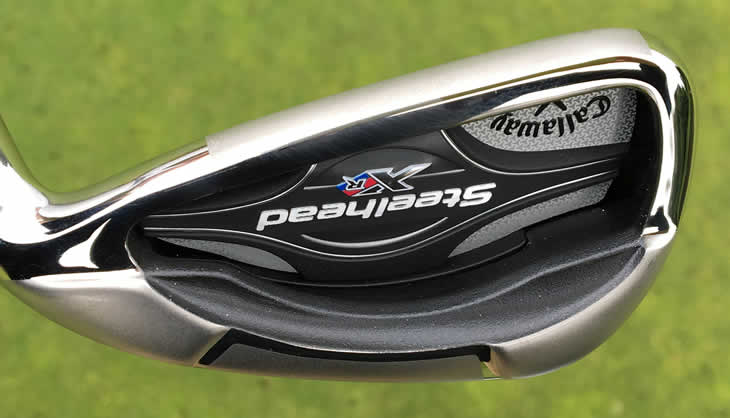
It's not a bad sound, just a little more hollow and Callaway has done well to keep it in character and bring out those powerful vibes.
Callaway has modified the CG in each head to position it in the right place for forgiveness and launch. In the long irons it is lower down and in the short irons it is higher up to reflect the impact positions on the face.
This is achieved by a 'Snubber', which is a piece of steel infused polyurethane between the body and the face, shown in red below, that lowers the CG and absorbs unwanted vibrations at impact to help the sound and feel.
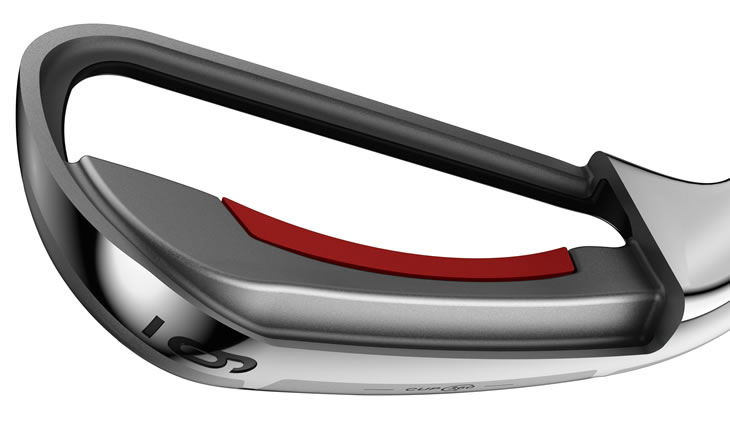
Sometimes the short irons in these types of sets can look a bit clunky, but right down to the wedge the top line stays midsized and the offset very manageable.
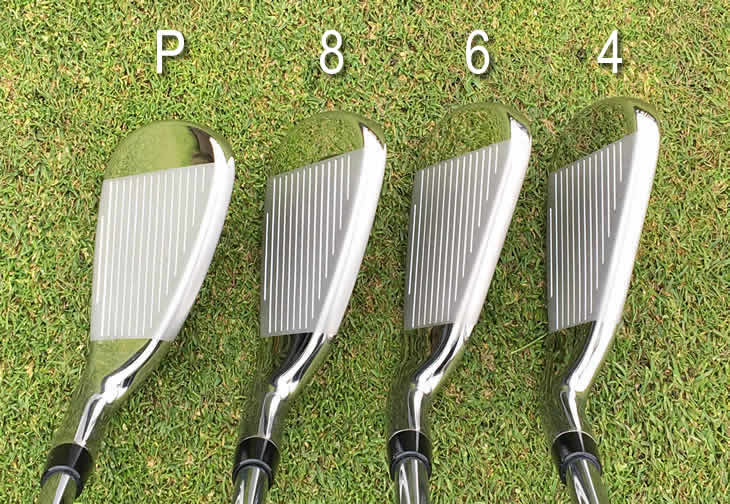
The P wedge is very strong at 44° so you will probably need to go down to the 49° A wedge before transitioning into your specialist wedges.
There is a choice of custom shafts through the Callaway custom fitting service, but the stock True Temper XP95 Stepless steel shaft is light and provides good feel to help maximise performance.

Overall I really like the Steelhead XR and not only because of the familiar looks. The performance is very good and the combination of power and forgiveness feels great at impact and has you clubbing down with a smile on your face, especially with the longer irons.
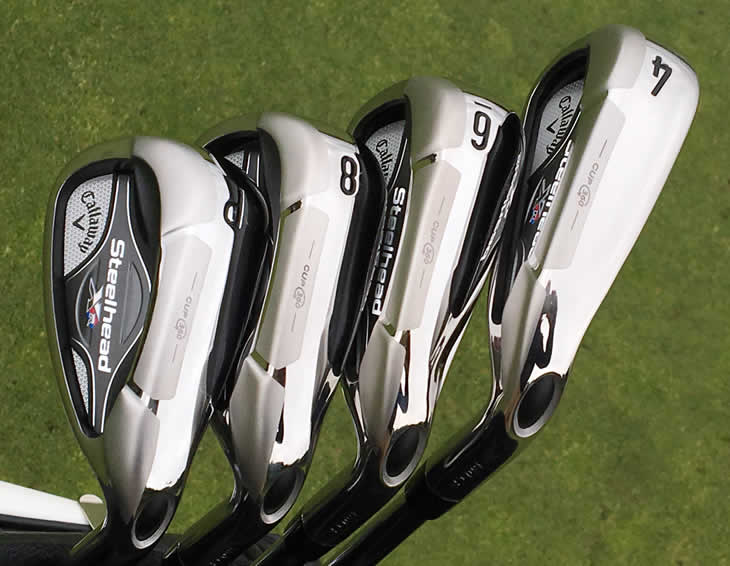
Callaway say that they are not replacing anything in their range and in some ways they aren't. The Steelhead XR has a larger head than the Callaway XR irons and more style than the rounded looking Callaway Apex CF16, so for high single figure to teen handicaps I would have the Steelhead XR any day.
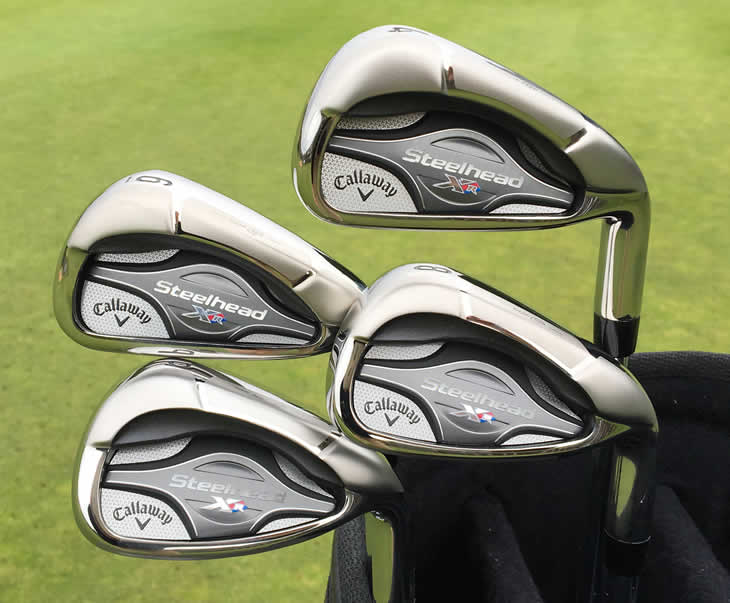
The small offset and mid flight could see these in single figure handicap bags as a set, or as long irons blended with different Callaway short irons. In the original Steelheads there was usually a Pro version which came with a more compact head and less offset and these were the bee's knees. There is no confirmation yet on whether there will be a similar version of the Steelhead XR, but if so, low handicappers could be in for trip down memory lane soon too.